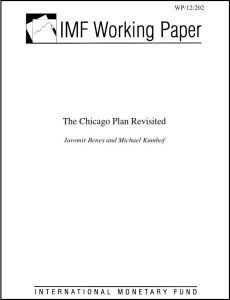Join getAbstract to access the summary!

Join getAbstract to access the summary!
Jaromir Benes and Michael Kumhof
The Chicago Plan Revisited
IMF, 2012
What's inside?
Everything old is new again: How a 1930s economic idea could work in a 21st-century economy.
Recommendation
International Monetary Fund economists Jaromir Benes and Michael Kumhof dust off a 1930s economic idea and update it with 21st-century analytical tools. During the Great Depression, leading economists proposed “the Chicago Plan” to abolish fractional reserve banking. The goal: to get banks out of the money-creating business and to restore that function to government, thus eliminating bank runs, cutting government debt and smoothing economic cycles. Today, in the aftermath of financial circumstances eerily reminiscent of those of the Great Depression era, Benes and Kumhof provide compelling new evidence that the Chicago Plan could hold the answer to monetary and economic reform. Unlikely as it may be that the plan could be enacted, though it is a topic of inside conversation, getAbstract recommends this treatise to economists, policy makers and academics for its alternative take on the US’s financial infrastructure.
Summary
About the Authors
Jaromir Benes and Michael Kumhof are senior economists at the IMF.



















Comment on this summary